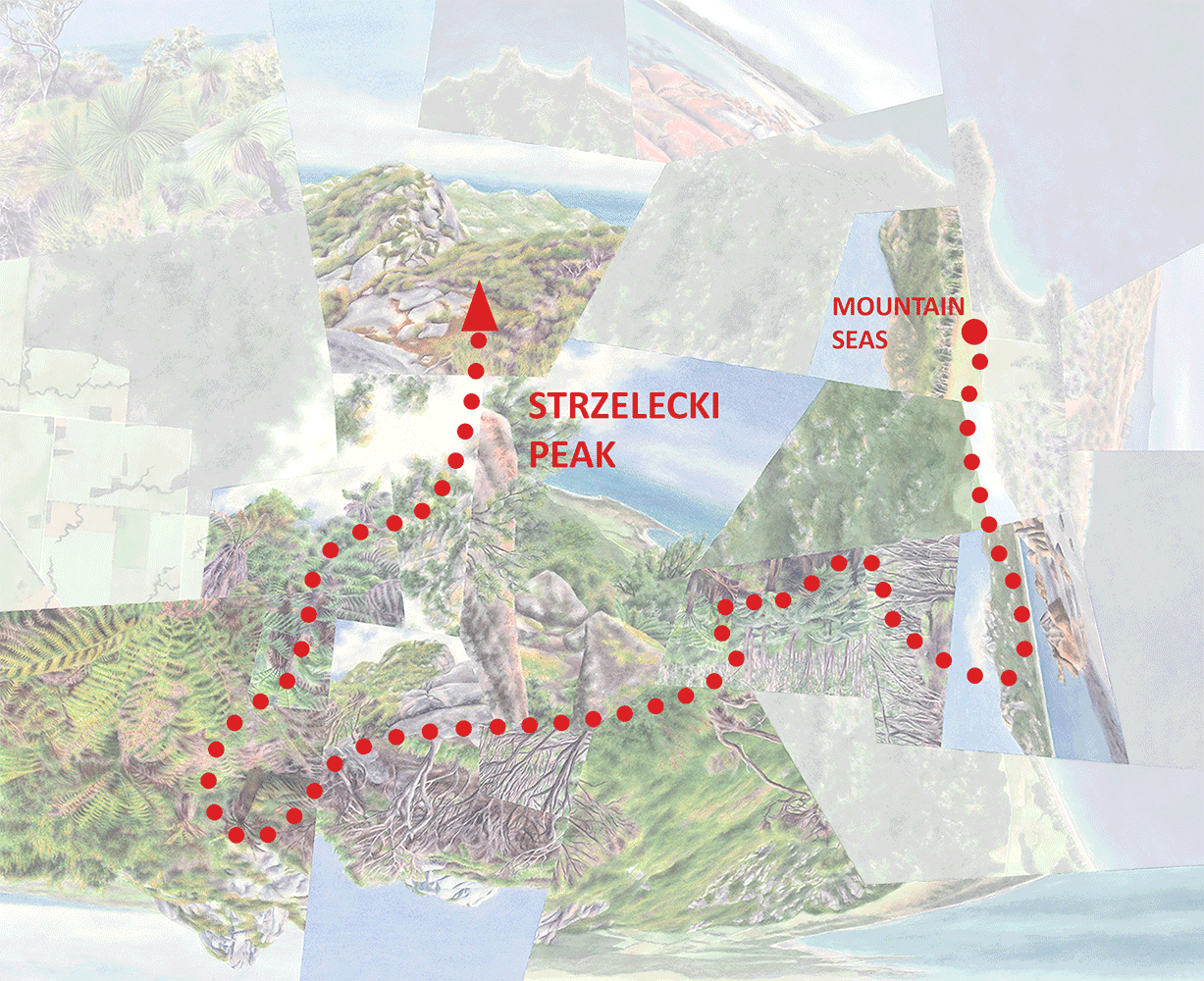My last series of posts focused on how islands are particularly good subjects for the worldviews because their smallness, boundedness, and isolation make them easy-to-grasp, empowering microcosms of the wider world. The islands I described are all surrounded by water, but islands in the less literal sense—surrounded and defined by any type of contrasting environment—can have the same effect, and I can’t think of any place I’ve depicted that doesn’t involve some form of island.
This next set of posts will go back to a topic I’ve dealt with before, another type of island—“wild” places surrounded by “civilization.” Without re-hashing my rabbit hole of a discussion on what I mean by those terms (my Realities of Nature posts), I think anyone would agree that the “inhuman-ness” of natural environments often goes beyond simply lacking a human presence to having a mysterious, sinister or even subtly hostile quality. In my Páramo post I make specific reference to it, but any time I depict or talk about surreal plants or landscapes there’s probably an element of threat that helps to set that place apart. That many of us are attracted to such places relates to the concept of the sublime—a library’s worth of landscape and art historical theory that I won’t get into, but basically it’s the idea that we find it invigorating to be in the presence of danger that can’t actually harm us.
Standing on the edge of the Grand Canyon (behind a guardrail) or below Half Dome would be an example of a sublime experience. But also part of this aesthetic tradition, as it’s been applied to landscape architecture, is the shrinking and encircling of landscapes otherwise truly threatening in their boundlessness in order to reduce that hostility to something more superficial and poetic. (Think the Ramble in Central Park—a zone of unmaintained, unrestrained forested hills and cliffs surrounded by a more manicured, urban landscape. It carries wilderness associations for sure, but the only real dangers are of the urban kind.) I think my own impulse to shrink and encircle nature in two dimensions could be interpreted along the same lines.
Volcanoes are probably the best examples of threatening natural features or phenomena that many find fascinating both because of and in spite of their destructive power. It’s the miniature ones that I’m most drawn to, whether in real life or ones that I’ve imagined, because while that power is still evidenced by the volcanic form, it feels “tamed” or “humanized.” And I find this humanization to be strongest and most empowering when surrounded by human-dominated landscapes, especially urban.
Auckland, New Zealand. Many of the scattered green patches are remnants of volcanic cones, now mostly public parks.
Here I’ll get into two real-world urban volcanoes that have inspired worldviews in which I’ve accentuated the urban-volcanic interface. Both are in Auckland, New Zealand, among the fifty or so making up the Auckland Volcanic Field. Many have been quarried away but they include a number of cones and lakes, some still active, and most now public open spaces. The most recent eruption was Rangitoto, an island a short boat ride from downtown, that rose from the gulf (to 260m) just 600 years ago (sorry, I guess I wasn’t fully done yet with islands in water as I promised last time).
Rangitoto has the added interest of being very intact and diverse ecologically, with the world’s largest pohutukawa forest (a common street tree and a relative of Hawaii’s ohi’a) covering the rocky lower slopes and more rainforest-like vegetation on the upper slopes and in the crater. Its wildness in the geological as well as ecological sense, contrasted with its manageable scale (the easy hike to the crater takes less than an hour) and proximity to the city made Rangitoto one of the highlights of my 2017 trip to New Zealand, even on par with the multi-day wilderness treks.
Looking toward the summit of Rangitoto from the lower slopes.
View toward downtown Auckland from the crater rim.
Rangitoto seen from the northern suburbs of Auckland.
Some tourist information on Rangitoto hikes and natural history.
Harbour Island, watercolor on paper, 18”x18,” inspired by Rangitoto. To accentuate the urban-wild contrast I’ve relocated the island closer to the center of the city.
The second Auckland volcano that has so far inspired a worldview (I visited about 8 in total) is Mt. Wellington—a typical grassy urban park, with picnic tables and athletic field, except for the deep crater in the middle. My guess is that it was once shrub-covered, and that the grasses are all European invasives, so I’ve learned that for me the presence of a crater can make up for the absence of ecological interest. (Normally, unless there’s design interest or a unique urban context, open spaces without relict or restored native vegetation don’t excite me much.)
Darren
View across the crater of Mt. Wellington on an icky day.
View across Mt. Wellington from the opposite side (the crater is in front of the hills in the background, obscured from this perspective).
Domain, watercolor on paper, 20”x20,” inspired by Mt. Wellington. The tree ferns are idealizations, reflecting some of what I imagine to be the original vegetation. The title comes from the fact that public parks in Auckland are known as “domains” (maybe a reference to how the land was set aside), a term that also brought to mind the quiet but still dominant presence of the volcano.























